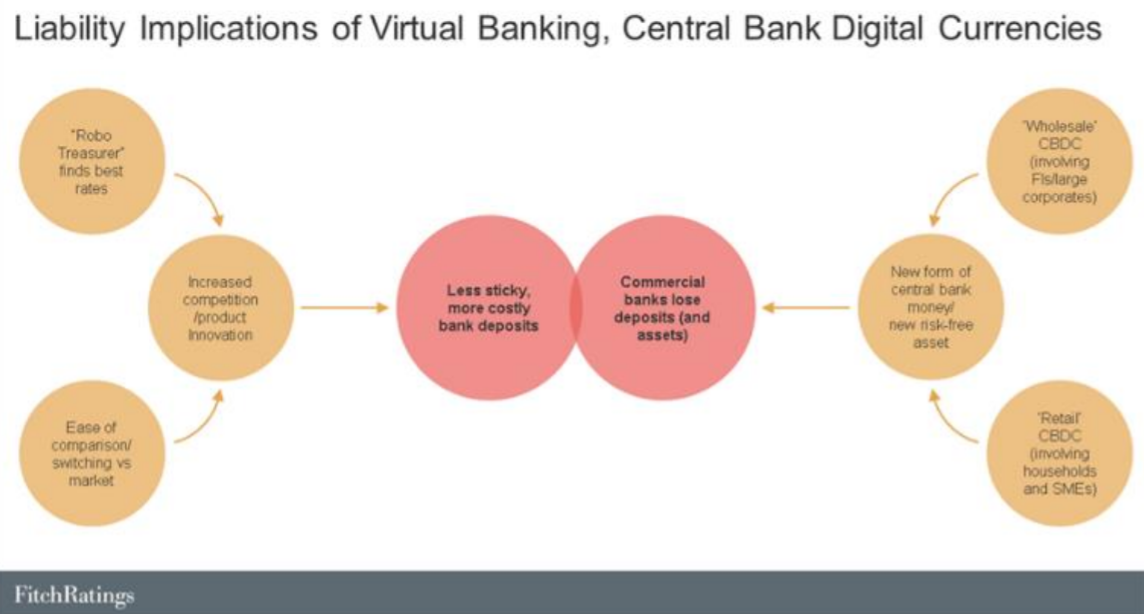Widespread adoption of CBDCs may be disruptive for financial systems if associated risks are not managed, said Fitch Ratings in a recent report. These include the potential for funds to move quickly into CBDC accounts from bank deposits, causing financial disintermediation, and for heightened cybersecurity threats as more touchpoints are created between the central bank and the economy.
The key benefits of retail CBDCs lie in their potential to enhance authority-backed cashless payments with innovations in step with the wider digitalisation of society. For central banks in some emerging markets, a key driver for researching CBDCs is the opportunity to bring underbanked communities into the financial system, and improve the cost, speed and resilience of payments.

Some advocates see CBDCs as a way of addressing challenges presented by the declining use of cash. The rise of digital payment systems, which have strong network effects, can create oligopolies among payment-system providers, often from the private sector.
Widespread use of CBDCs could erode these providers’ control over payments-related data and improve central banks’ capacity to track financial transaction data, aiding the prevention of financial crime. However, if CBDCs offer less privacy than cash, or severely cap amounts held in electronic wallets, some may be deterred from using them.
China’s pilot CBDC, known as Digital Currency and Electronic Payment (DC/EP), provides a useful illustration of how policymakers may approach the challenges of CBDCs in practice. The scheme has been tested in a number of cities since early 2020, and has grown progressively larger in terms of scope and number of participants, reaching a reported half a million users under the latest trial during 1Q21.
In addition, the PBoC in February 2021 joined the Central Bank of the UAE, the Hong Kong Monetary Authority and the Bank of Thailand on Project Inthanon-LionRock, a multiple CBDC (m-CBDC) crossborder payment project. This indicates the authorities’ interest in the potential for the DC/EP to play a role in international payments.

